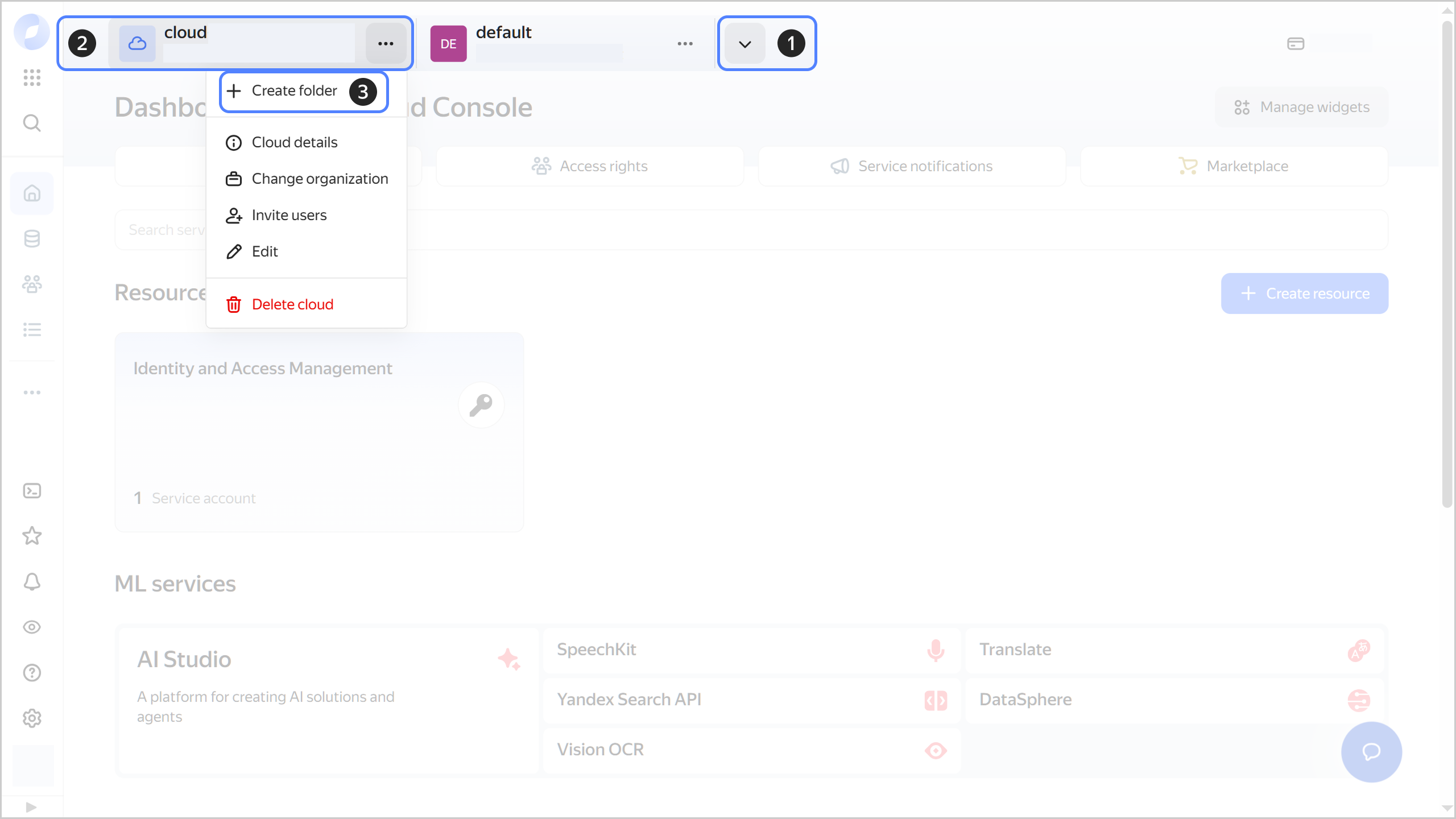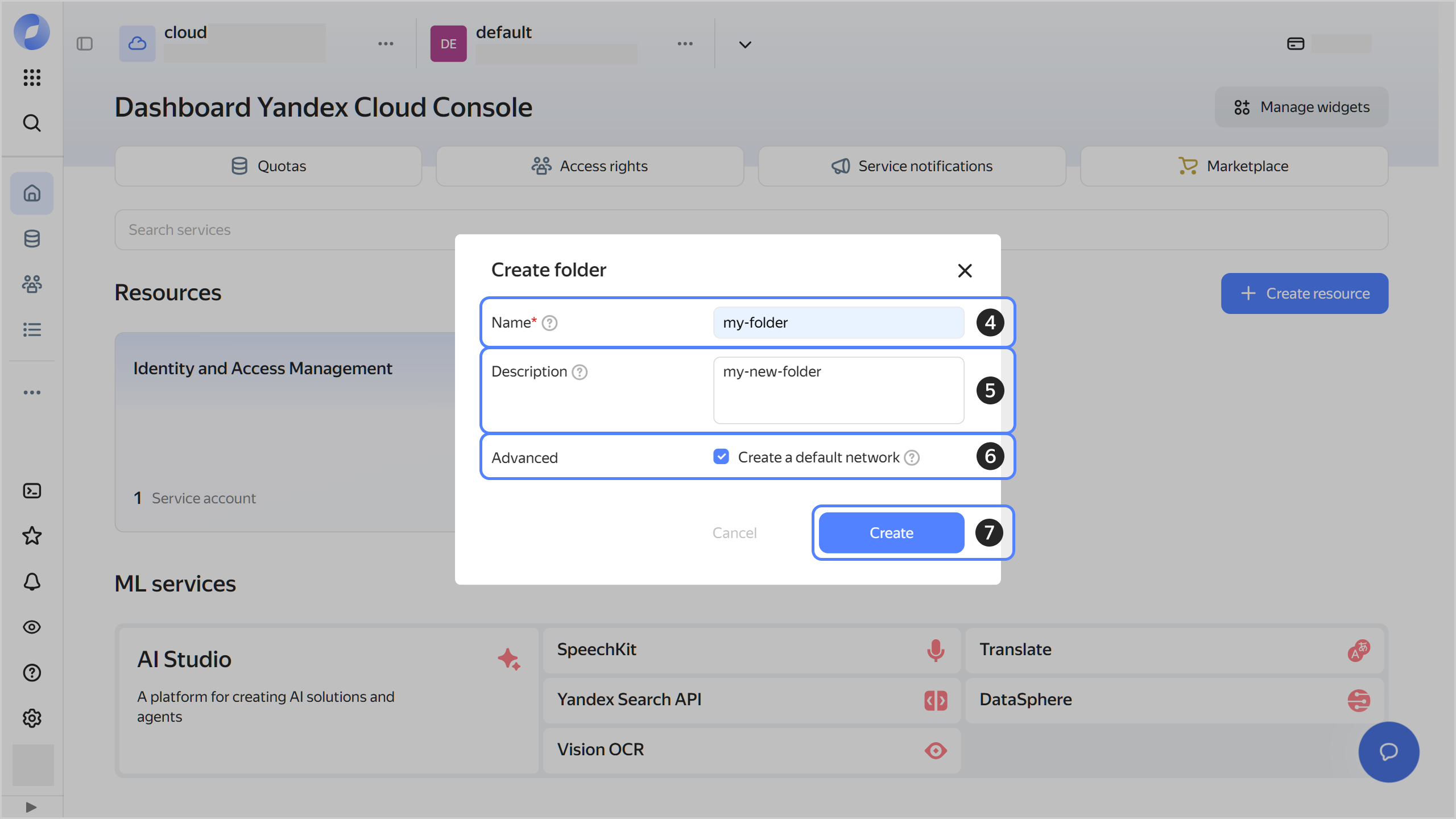Getting started with Managed Service for Apache Airflow™
To get started with Managed Service for Apache Airflow™:
Getting started
-
Navigate to the management console
-
If you do not have a folder yet, create one:
-
In the management console
-
To the right of the cloud name, click
-
Select Create folder

-
Give your folder a name. The naming requirements are as follows:
- It must be from 2 to 63 characters long.
- It can only contain lowercase Latin letters, numbers, and hyphens.
- It must start with a letter and cannot end with a hyphen.
-
Optionally, specify the description for your folder.
-
Select Create a default network. This will create a network with subnets in each availability zone. Within this network, you will also have a default security group, within which all network traffic will be allowed.
-
Click Create.

Security group settings do not affect access to the Apache Airflow™ web interface.
-
-
Assign the following roles to your Yandex Cloud account:
- managed-airflow.editor to create a cluster.
- vpc.user to use the cluster network.
- iam.serviceAccounts.user to attach a service account to a cluster.
Note
If you are unable to manage roles, contact your cloud or organization administrator.
-
Create a Yandex Object Storage bucket for storing Managed Service for Apache Airflow™ DAG files.
-
Assign the service account the
managed-airflow.integrationProviderrole for a folder or bucket. -
Grant the
READpermission for the bucket to the service account.
Create a cluster
- In the management console, select the folder where you want to create a Managed Service for Apache Airflow™ cluster.
- Select Managed Service for Apache Airflow™.
- Click Create a cluster.
- Specify your cluster settings and click Create. For more information, see Creating a cluster.
- Wait until the cluster is ready: its status on the Managed Service for Apache Airflow™ dashboard will change to Running and its state, to Alive. This may take some time.
Open the Apache Airflow™ web interface
You can manage Apache Airflow™ through the web interface. Only users with the managed-airflow.user role or higher can use it. To get started with the Apache Airflow™ web interface:
-
In the management console
-
Go to the Managed Service for Apache Airflow™ web server page.
-
In the web interface that opens, enter the credentials:
- Username:
Admin - Password:
Adminuser password that you set when creating a cluster
- Username:
For more information about how to use the web interface, see the Apache Airflow™ documentation
In addition to the web interface, you can use the Apache Airflow™ API
What's next
- Read about Managed Service for Apache Airflow™ concepts.
- Learn more about creating a cluster and using Apache Airflow™ interfaces.
- Create DAG files and upload them to the Managed Service for Apache Airflow™ cluster. For a DAG file example, check this Apache Airflow™ tutorial